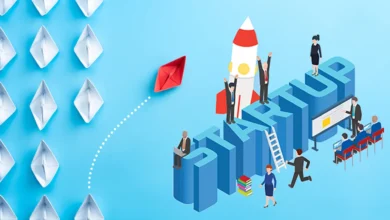‘Buy Now Pay Later’ services transforming Consumer Credit and E-Commerce in India

India’s Buy Now Pay Later (BNPL) market has seen exponential growth, generating a staggering USD 8 billion in revenue this year, and is projected to sustain a compound annual growth rate (CAGR) of 10% in the coming years according to recent Mordor Intelligence Report. This surge reflects the increasing popularity of BNPL services, particularly among younger consumers and online shoppers, who are leveraging these flexible payment solutions to manage their finances more effectively and afford higher-priced items.
A notable 22% of Indian consumers have adopted BNPL services, with the primary user demographic being individuals aged 26 to 35. This age group, often characterized by early career professionals and young families, finds BNPL services particularly appealing for their convenience and ability to ease the financial burden of significant purchases.
Despite this, access to credit remains limited in India. Only 70 million Indians, or 7% of the population, have access to credit, leaving a vast 93% without such access. BNPL services are stepping in to bridge this gap, providing an alternative means of financing that is more accessible and less intimidating than traditional credit products.
The rise of e-commerce in India, which is approaching a valuation of USD 100 billion, has been a catalyst for the growth of BNPL services. The digitization of the economy, bolstered by the widespread availability of affordable internet, has propelled digital sales, with 71% of consumers reporting increased online shopping since the onset of the pandemic. This shift has naturally driven the adoption of BNPL, as online shoppers increasingly opt for installment payment options at checkout for their convenience and flexibility.
Clothing and electronics have emerged as the top categories purchased through BNPL services, indicating a preference for using BNPL to finance higher-value goods. By allowing consumers to spread the cost of expensive items over time, BNPL services have not only made these products more affordable but have also contributed to an increase in the average order value for e-commerce transactions. This dynamic benefits e-commerce platforms by driving higher sales volumes and revenues.
The BNPL market in India is highly competitive, with major players such as LazyPay, Paytm Postpaid, Zest Money, FreeCharge, and Simpl leading the charge. These companies differentiate themselves through competitive interest rates, flexible repayment options, and superior customer experiences.
LazyPay, for example, has seen a remarkable 400% growth over the past two years, partnering with 296 merchants to offer BNPL as a payment option. Customers appreciate the low penalties for late payments, the reliability of the app, and the prompt resolution of customer issues, which collectively enhance the user experience and foster loyalty.
The rapid adoption and success of BNPL services have attracted the attention of financial institutions, retailers, and e-commerce platforms, leading to numerous partnership opportunities. Financial institutions are collaborating with BNPL companies to offer their customers flexible payment options, while retailers and e-commerce platforms integrate BNPL services to enhance customer experience and boost sales.
This increased collaboration and competition have spurred innovation within the BNPL industry. To attract and retain customers, service providers continuously strive to offer more competitive terms, improve user experiences, and introduce new features. This ongoing innovation is expected to further solidify the position of BNPL services in the Indian market.
Despite the impressive growth, the BNPL market in India faces several challenges, including regulatory scrutiny and the need for sustainable business models. However, the potential for growth remains substantial, given the large portion of the population still without access to traditional credit.
As BNPL services continue to evolve and adapt to market needs, their role in the Indian financial ecosystem is likely to expand. The integration of advanced technologies, coupled with a focus on customer-centric solutions, will be crucial in driving the next phase of growth for the BNPL sector in India.
In conclusion, the BNPL market in India is not just a fleeting trend but a transformative force in the consumer credit and e-commerce landscape. With its current trajectory, BNPL is poised to redefine how Indian consumers approach purchasing and financial management, paving the way for a more inclusive and dynamic economic environment.




